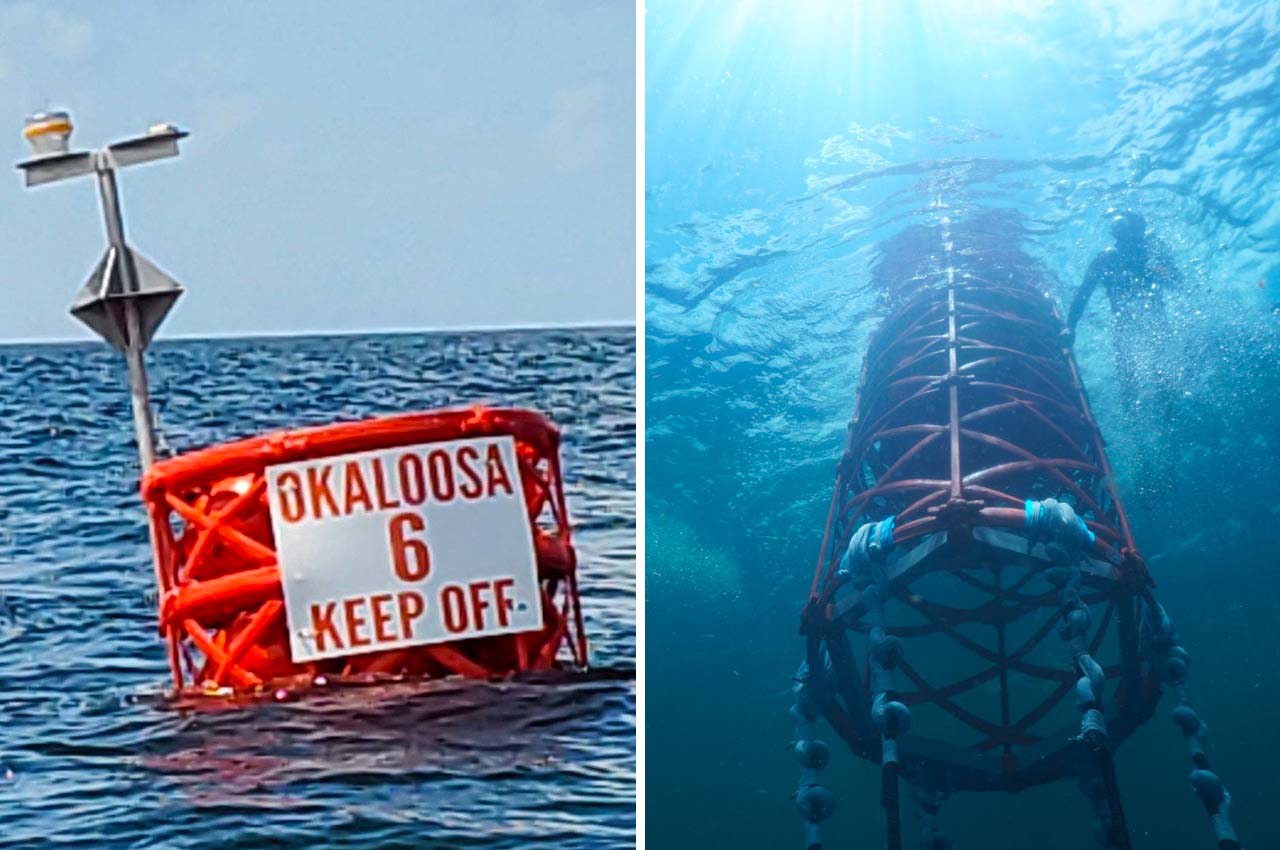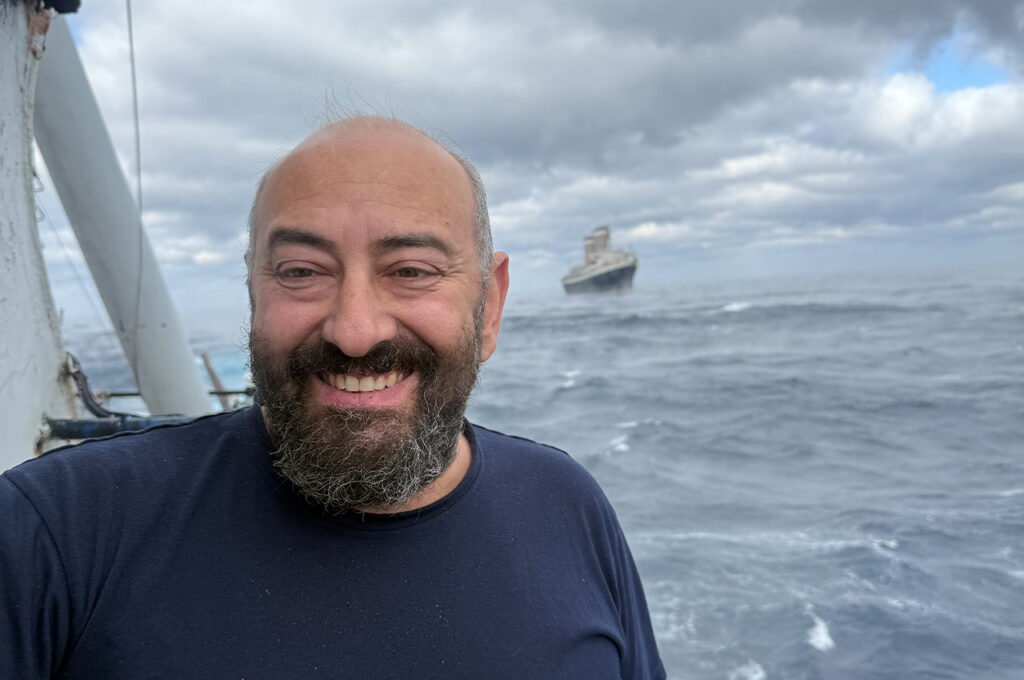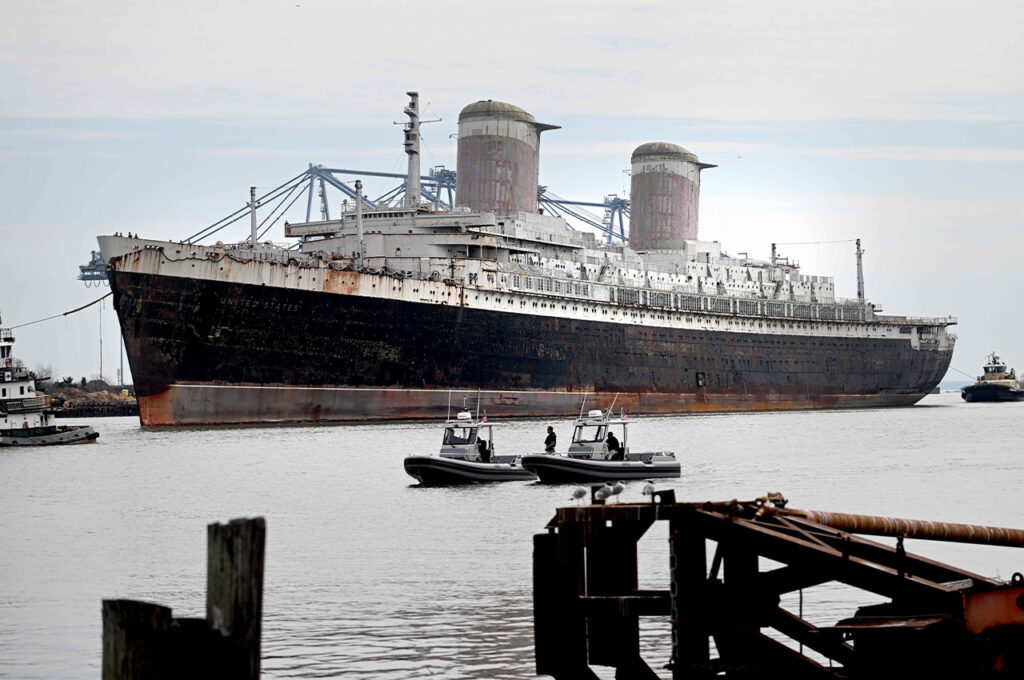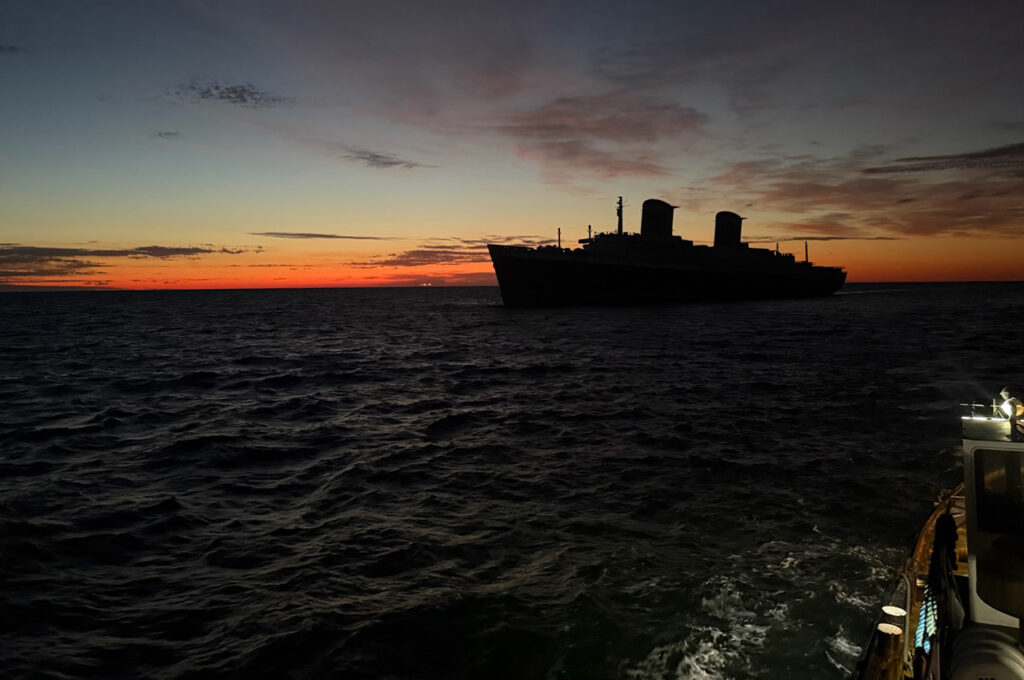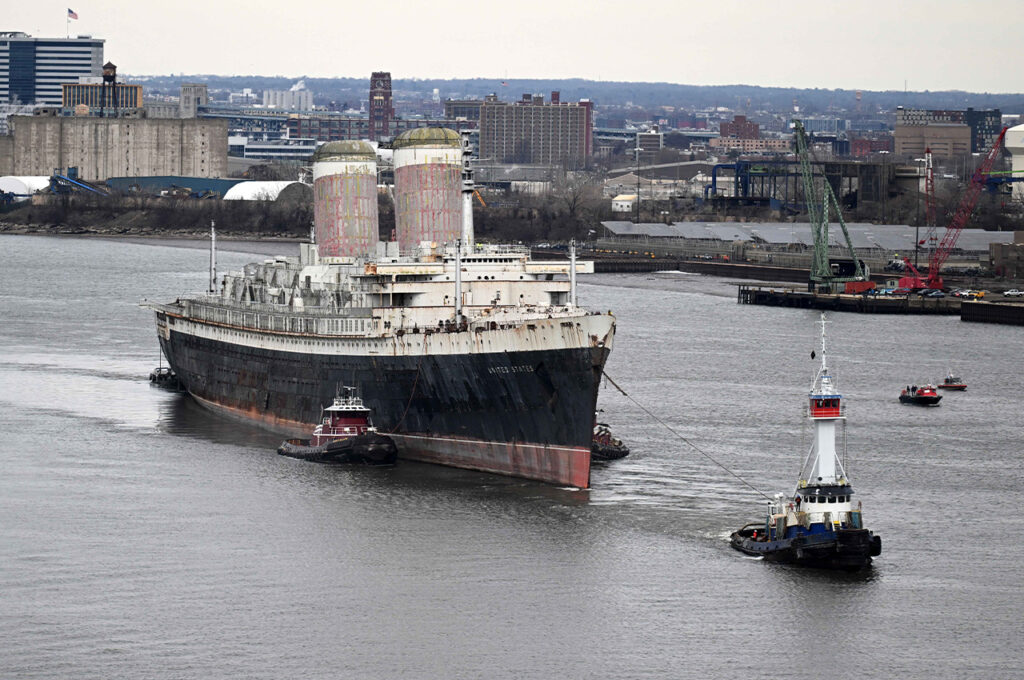On the morning of Friday, October 7, 2022, FADs No. 5 & 6 were re-deployed off the coast of Destin-Fort Walton Beach after breaking loose nearly one year ago.
The Okaloosa County Coastal Resource Team deployed the first four Fish Aggregating Device (FAD) buoys on August 11, 2020. The deployment took place at four locations found 60-80 miles off the Destin-Fort Walton Beach shore and is the first FAD buoy deployment in the continental United States.
- In January 2021, the final round of FADs were deployed, completing the Captain Kelly Windes eight-buoy network.
The first four buoys proved to be a success very early on. There were reports that a variety of pelagic fish species such as tuna, marlin, and mahi mahi were caught at the FAD sites shortly after deployment.
In January 2022, Get The Coast reported that two of the buoys had broken loose and had to be recovered.
“Each of the eight fads has a GPS beacon on it, where every 12 hours it sends out a location and we’re able to make sure that the FAD is on station, where we deployed it, or if it breaks loose, it allows us to track it and recover it,” said Alex Fogg, Coastal Resource Manager for Visit Destin-Fort Walton Beach, back in January.
According to Fogg, notifications are sent out if the FAD drifts more than a mile from its deployment location. On October 4, 2021, he started receiving a notification that FAD No. 6 was no longer on station.
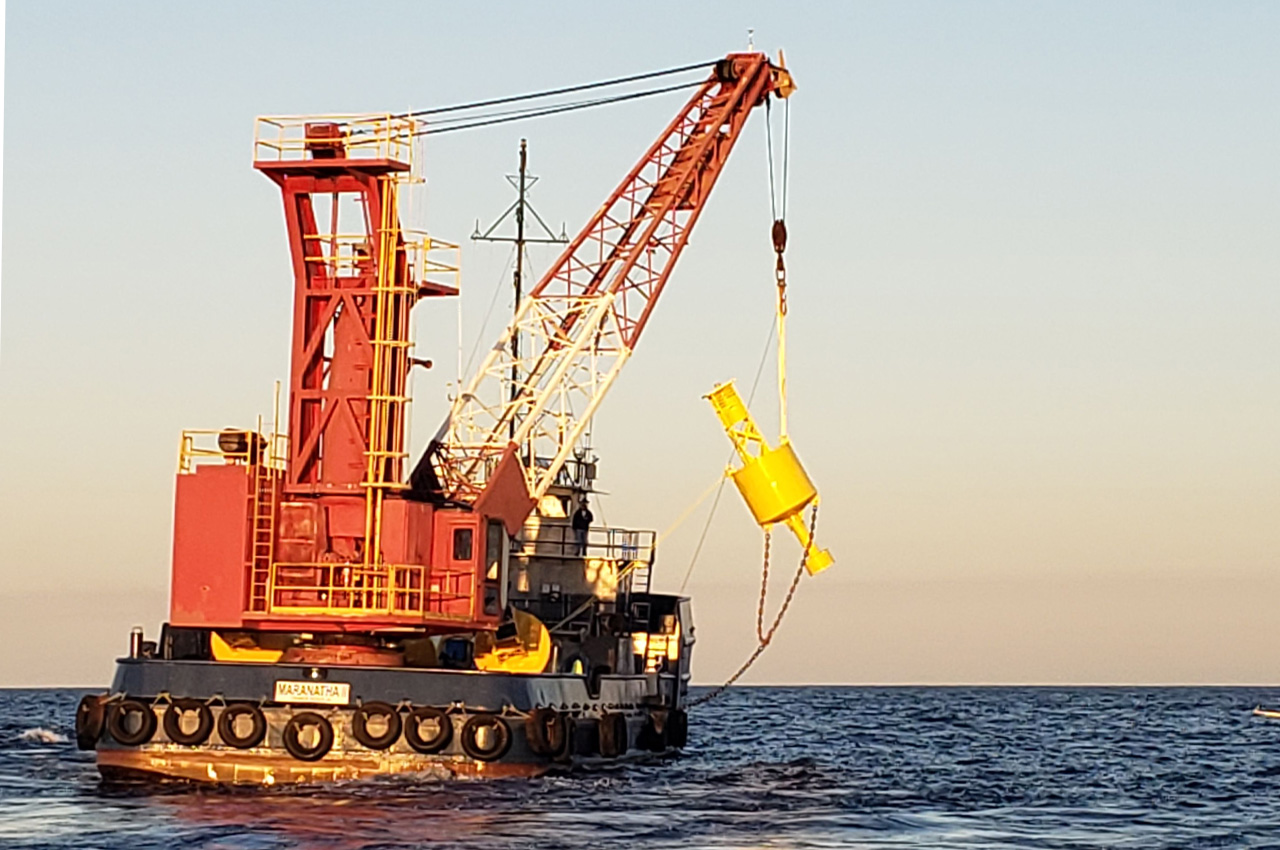
Walter Marine out of Orange Beach, Alabama was tasked with recovering the rogue FAD. This is the same contractor who deployed the FADs and many of the artificial reefs offshore Destin-Fort Walton Beach.
But just as they got a handle on one buoy, FAD No. 5 started reporting that it was off station, and Fogg had to go through the same process of recovering it.
- FAD No. 5’s design is a bit different from the previous buoy. This buoy has about 100 feet of chain that connects to the buoy, that then connects to some of the same line down to the anchor.
Once recovered, Fogg and friends did a full investigation to determine why both FADs broke loose.
“We suspect it was a combination of impacts from deep water trawlers and people tying up to the fads, which impacted them and caused them to break loose,” said Fogg.
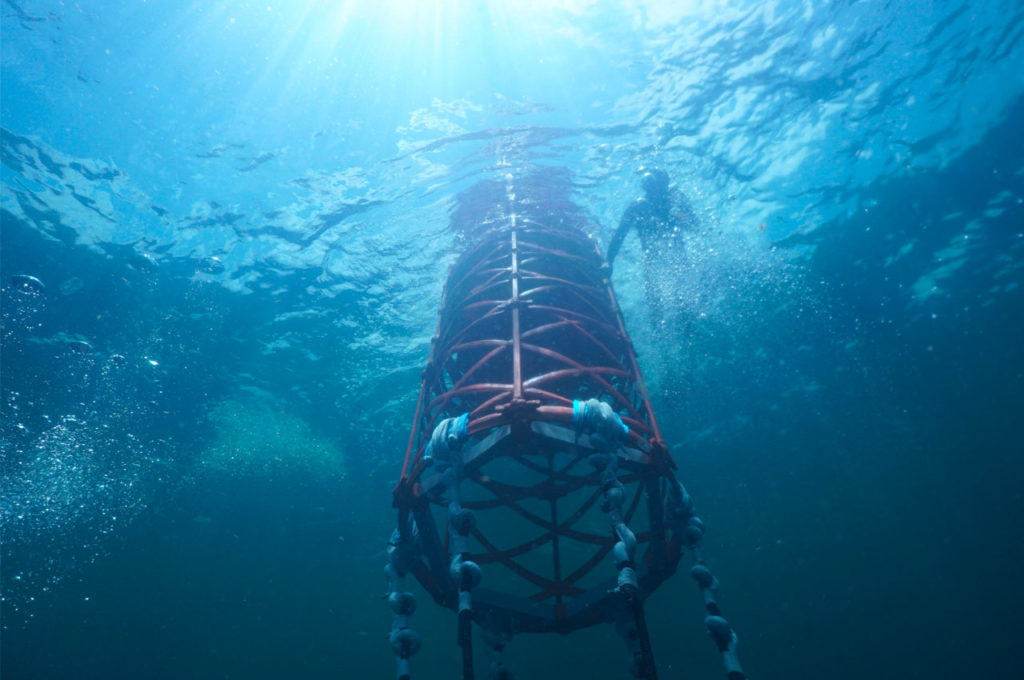
After a series of supply chain delays, the new line finally arrived, the concrete anchor was poured, and the Coastal Resource Team was ready to redeploy the two FADs just in time to kick-off the Destin Fishing Rodeo.
“It won’t take these FADs very long to start holding fish,” said Fogg. “With them being the only structure out there in a pretty featureless area, it is going to attract a lot of those pelagic fish.”
Since being deployed in 2020, the network of FADs has exceeded expectations, drawing in fishermen from as far away as Mexico Beach, Florida all the way over to Venice, Louisiana.
“Just this past Spring, a dozen Blue Marlin were caught on one of the FADs,” added Fogg. “Lots of Yellowfin tuna, Bluefin tuna, and Wahoo. It’s also been a great opportunity for us to do a little bit of research out there, specifically with fish movement and detection around these sites.”
As you can imagine, the recovery and redeployment process is costly on the county.
The lifespan of these FADs is supposed to be five years or more before maintenance and other things have to happen. Fogg says that he and his team will learn from these issues, but also asks that vessel operators learn as well.
“We really want to encourage folks to not tie up to these FADs,” explained Fogg. “Regardless of whether you think they are able to hold your boat, it’s unneeded stress on these buoys and it can ruin it for everybody.”
- Additionally, there is a lot of other equipment on the FADs, such as lights, radar reflectors, and the buoy itself, that could be damaged by people tying off to them.
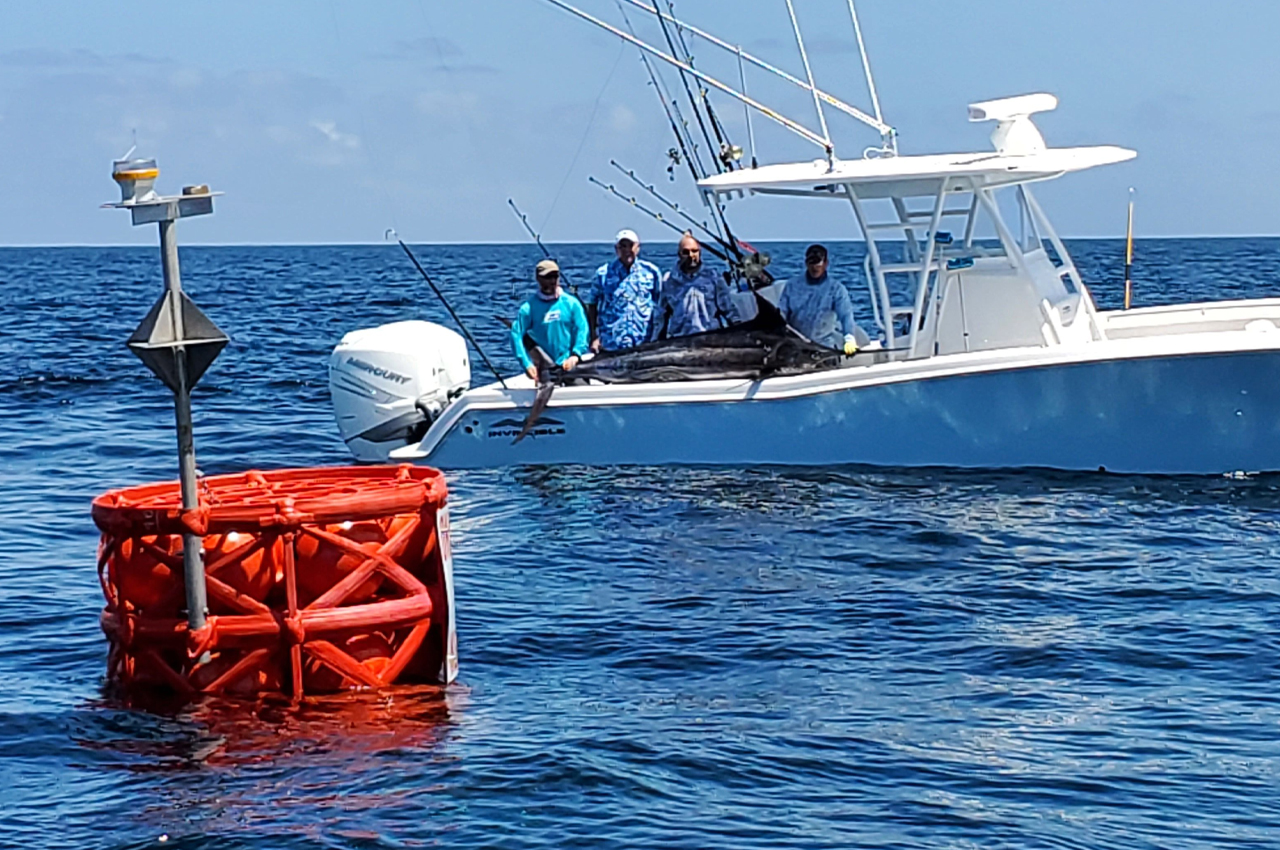
“It’s not a cheap process,” added Fogg. “Regardless of the cause of failure, we need to do everything that we can to prevent unneeded stress on these buoys. Tying off is definitely an unneeded stress.”
Fogg says that he and his team go out to inspect the buoys once per quarter, and when they pull up to the buoys, they’re covered in anchor lines and dock lines, along with other things that people are using to tie off to them.
“We have this awesome resource out there that is being negatively impacted by those who maybe aren’t considering that what they’re doing is not so good for those buoys,” he added.
Cost isn’t the only thing to worry about
Aside from recovery and redeployment costs, there is another thing to keep in mind: The county has active permits right now for the FADs. But when those permits expire, there’s no guarantee that they will be able to renew those permits.
“There’s been a lot of changes in some of the endangered species that are out there and where their essential habitat is located. That essential habitat now encompasses the FADs,” he said. “Redeploying within that area may be very difficult once our permit has expired.”
If the county is unable to renew the permits, the existing FADs within the network would be allowed to stay in perpetuity. However, if one FAD broke loose again, the county would not be able to redeploy the FAD.
Re-deployments aside, Fogg is happy to see FADs 5 & 6 back in the water.
“I suspect that there will be plenty of rodeo fish caught at these FADs over the next three weeks or so, along with the existing FADs,” he added.
Coordinates
| FAD Buoy Number | Latitude | Longitude | Charted Depth (ft) |
|---|---|---|---|
| 1 | 29° 31.699 | -87° 02.633 | 1,191 |
| 2 | 29° 27.342 | -87° 07.036 | 1,610 |
| 3 | 29° 23.353 | -87° 11.166 | 1,822 |
| 4 | 29° 18.691 | -87° 15.549 | 2,359 |
| 5 | 29° 26.910 | -86° 52.864 | 1,650 |
| 6 | 29° 20.887 | -86° 52.748 | 1,715 |
| 7 | 29° 14.914 | -86° 52.815 | 1,830 |
| 8 | 29° 08.847 | -86° 52.612 | 1,847 |

